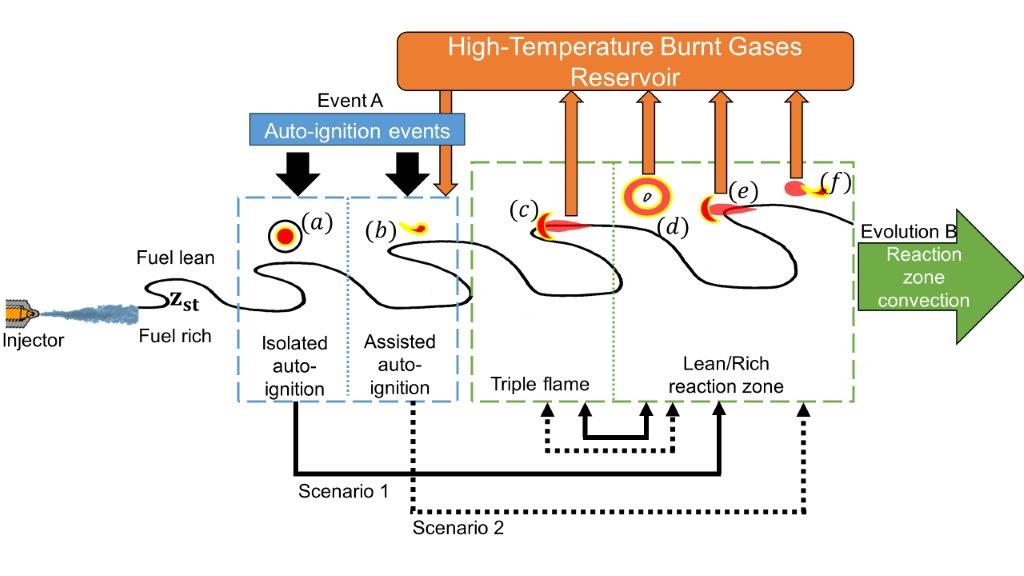THESIS OF Fabien Tagliante*
The distance between the fuel injector and the location where the flame stabilizesa is a major factor affecting soot production in the chambers of compression ignition engines. This production is reduced or even eliminated when the distance in question is sufficiently large.
This distance is governed by the interactions between the turbulent flow, generated by the very high-pressure liquid fuel jet, and the reactions resulting
from the ensuing chemical kinetics. In order to be understood, these complex interactions need to be studied on very small scales and under severe
thermodynamic conditions.
This was done through the combined use of optical diagnostics and numerical simulations. For the experimental research, a high-pressure chamber was
used, with optical accesses to enable the evolution of the jet and its combustion to be visualized over time using various simultaneous laser techniques(1).
3D simulations of gas jets similar to real two-phase liquid/gas flows were conducted, providing a highly detailed reproduction of local interactions(2).
The resulting conceptual model (figure) provides a more accurate understanding of the interactions between the phenomena identified in previous research – the counter-current propagation of premixed flames and auto-ignitions (spontaneous or under the effect of hot gases) – and, for the first time, a detailed understanding of their impact on diesel flame stabilization.

Simplified modeling approaches using new knowledge may lead to the development of technical solutions to significantly reduce soot produced in compression ignition engines.
a - So-called lift-off distance.
*Thesis entitled "Combined study by direct numerical simulation and optical diagnostics of the flame stabilization in a Diesel spray"
(1) F. Tagliante, L. M. Malbec, G. Bruneaux, L. M. Pickett, C. Angelberger.
DOI : 10.1016/j. combustflame.2018.07.024
(2) F. Tagliante, T. Poinsot, L. M. Pickett, P. Pepiot, L. M. Malbec, G. Bruneaux, C. Angelberger.
DOI : 10.1016/j.combustflame.2018.12.007
Scientific contacts: christian.angelberger@ifpen.fr - Gilles Bruneaux





